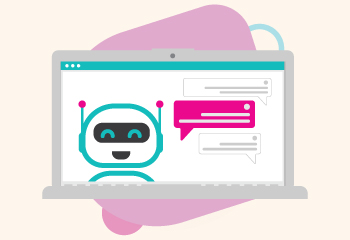Let’s focus on the needs of consumer brand companies. We will examine whether general purpose chatbot platforms can satisfy their requirements or brands need a purpose-built marketing chatbot platform that is designed specifically for consumer brand marketing.
Consumer brand needs
Although every consumer brand has its own particular need, we can generalize and say that most of them strive to create an emotional connection. A sort of “conversation” with their audience that will ultimately lead to the sale of the brand’s product. Traditionally, in the world of consumer facing brands this “conversation” is carried out with Above The Line (ATL) advertising. Where mass media such as television, print, radio and web is used to promote brands and reach out to the target consumers. It also carried out through Below the Line (BTL) advertising, which involves email marketing, distribution of pamphlets, promotions, brochures placed at point of sale, and more. In addition to these types of advertising activities, brands usually have customer service and sales representatives that communicate directly with consumers. A well run brand will ensure all these activities are in sync, conveying the same message and representing the brand’s spirit and tone of voice. As we will see below, ensuring the desired experience across all these activities can be somewhat technologically challenging.
Chatbot as a sales representative
Let’s imagine a consumer walks into an Adidas store looking to buy a pair of sneakers. A sales rep with some basic training will most probably ask some guiding questions to “navigate” the customer through the product catalog in order to find the desired pair based on the customer’s requirements. Questions such as “Do you like these?”, “What size do you wear?”, “Which color would you prefer?”, “For what purpose are you looking for?”, “What is your budget?”
Now let’s examine how this would work with a chatbot. In order to emulate this user experience, the chatbot platform must be able to at least integrate with the brand’s product catalog. Most ‘general-purpose chatbot builders’ don’t usually offer this capability ‘out-of-the-box’. Consumer brand chatbot platforms such as exceed.ai offer the ability to seamlessly integrate with the brand’s catalog in order to pull the products’ data with all relevant attributes and prices. It then further translates them into a conversational interface. Using natural language processing (NLP) and machine learning they allow end users to use natural language as if they were conversing with a human sales representative in-store.
Basic general purpose chatbots usually offer menu-based browsing experiences with endless menus. However, the ideal experience is a combination of free text queries, menu-based browsing and quick replies. A user can ask for a specific product and the chatbot might follow up with a clarification question to narrow the results before presenting results to the user (this is done through natural language understanding that allows the chatbot to interpret ‘human’ messages). They can for example, ask for “black and white running shoes”. When a chatbot asks them for the price range they can simply reply with “around $100”.

Chatbot
Taking the sales rep to the next level
While the above analogy relates to a ‘regular’ sales representative, the more sophisticated sales rep will take it a step further and analyze the potential customer in order to offer him the most relevant product. The rep will gather as many “implicit clues” as possible. Everything can be used to increase the relevancy of the offering, from the way the customer dresses, the current shoes they are wearing, their body language, the car they came in, and more. Much like the savvy sales rep, a chatbot can also use information about the user to personalize the offering. But unlike a human sales rep, the chatbot can utilize more information with more insight. These include:
- Previous interactions – the history of previous interactions is used to establish the interests and the context. Unlike the situation with the human sales rep, where the customer may have engaged with different representatives in the past, in this case it is always one chatbot and all these past interactions are recorded and analyzed.
- Browsing history – it is also possible to alert users about relevant promotions or price reductions on products they were recently browsing.
- Sentiment analysis – another advanced feature is the ability to analyze the user’s sentiment towards the brand. If the customer is dissatisfied, annoyed, etc., it probably won’t be a good idea to approach them with regular campaign messages.
- Store locator – chatbots with a store locator feature can leverage this information and ask follow-up questions about the user’s recent visit to a specific store.
A smarter consumer-oriented bot
In addition to the specific consumer brand features that we have discussed above, another important aspect to consider when implementing a chatbot for a brand is ‘how smart the bot is’. A simplistic chatbot may be counter-productive to the brand. It’s much like hiring a rude person to provide customer service. It creates frustration for the customer and does not represent the brand’s image.
Chatbot platforms dramatically vary in their ability to process natural language and carry an intelligent conversation. For example, one thing to consider is the ability to support “Context Switching” within the conversation. Context switching is the ability to answer multiple questions that are very different in their meaning and context. For example, a buyer may ask a sales representative, “do you have black shoes” and then immediately ask, “are you open on Fridays?”. A human can easily understand that these two questions are based on two different contexts. However, a chatbot that does not support “context switching” will not be able to jump between these two questions. In brand-related conversation there isn’t necessarily a structured flow, so this feature, which is usually supported by the more sophisticated chatbot platform, is crucial for the success of the chatbot to these type of customers.


![Discover The Best Email AI Assistant [AI Unleashed]](https://exceed.ai/wp-content/uploads/2024/01/1_1-400x250.webp)
![The Power Of AI Sales Agents [Autonomous Reps]](https://exceed.ai/wp-content/uploads/2024/01/happy-sales-agent-smiling-400x250.webp)